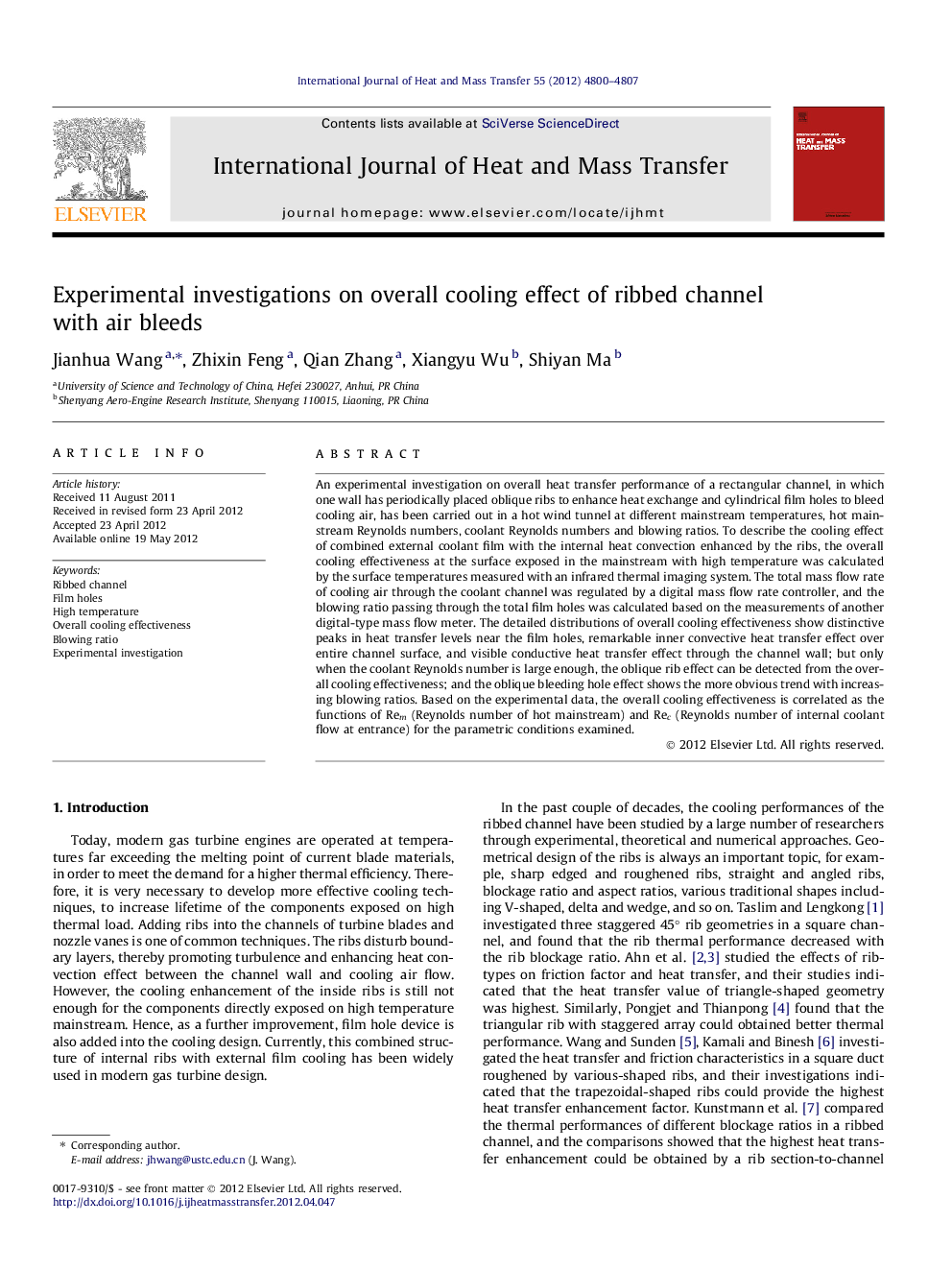| Article ID | Journal | Published Year | Pages | File Type |
|---|---|---|---|---|
| 659278 | International Journal of Heat and Mass Transfer | 2012 | 8 Pages |
Abstract
An experimental investigation on overall heat transfer performance of a rectangular channel, in which one wall has periodically placed oblique ribs to enhance heat exchange and cylindrical film holes to bleed cooling air, has been carried out in a hot wind tunnel at different mainstream temperatures, hot mainstream Reynolds numbers, coolant Reynolds numbers and blowing ratios. To describe the cooling effect of combined external coolant film with the internal heat convection enhanced by the ribs, the overall cooling effectiveness at the surface exposed in the mainstream with high temperature was calculated by the surface temperatures measured with an infrared thermal imaging system. The total mass flow rate of cooling air through the coolant channel was regulated by a digital mass flow rate controller, and the blowing ratio passing through the total film holes was calculated based on the measurements of another digital-type mass flow meter. The detailed distributions of overall cooling effectiveness show distinctive peaks in heat transfer levels near the film holes, remarkable inner convective heat transfer effect over entire channel surface, and visible conductive heat transfer effect through the channel wall; but only when the coolant Reynolds number is large enough, the oblique rib effect can be detected from the overall cooling effectiveness; and the oblique bleeding hole effect shows the more obvious trend with increasing blowing ratios. Based on the experimental data, the overall cooling effectiveness is correlated as the functions of Rem (Reynolds number of hot mainstream) and Rec (Reynolds number of internal coolant flow at entrance) for the parametric conditions examined.
Keywords
Related Topics
Physical Sciences and Engineering
Chemical Engineering
Fluid Flow and Transfer Processes
Authors
Jianhua Wang, Zhixin Feng, Qian Zhang, Xiangyu Wu, Shiyan Ma,
